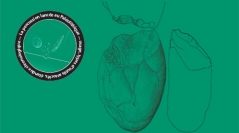

 Comptes Rendus Palevol
21 (5) - Pages 123-143
Comptes Rendus Palevol
21 (5) - Pages 123-143The preventive archaeological excavation of the Bois de l’Hôpital site (Saint-Sulpice-la-Pointe, Tarn, France), between November 2015 and April 2016 (Bernard-Guelle et al. 2016), uncovered several archaeological layers dating back to the Upper Pleistocene set in an unprecedented/original context for the Tarn’s lower valley’s Middle Paleolithic. The main level (archeological unit UA3) displays a lithic industry mainly manufactured on quartz, sometimes quartzite or flint, related to a Mousterian technological complex. The product of anvil discoid and Levallois debitage technique, the tools made from flakes (mostly scrapers and denticulates) coexist with pebble tools. Rarely the subject of a detailed study – particularly in Mousterian collections – the pebble tools’ operating chain (chaîne opératoire) has been described, functional purposes included. This technological, morphological and functional analysis identifies several tool groups and is able to link some of them to specific mode of action on material, comparing them with an experimental data repository. The study of the macro-tools from archaeological unit UA3 emphasizes: 1) their high proportion among the tools; 2) an important structural variety among those specific tools; and that 3) most of them are consistent with a cast percussion motion, possibly related to bone-fracturing process. These results prompt us to continue developing the technological and morphological analysis of those tools, whose inherited or reinvested (compared to Lower Paleolithic technological complexes) or alleged functions seem to result in a lack of interest from the researchers. They call for the collection of more experimental data repositories in order to compare other quartz and quartzite macro-tools sets, often described in the Tarn basin during MIS5 and MIS3.
Macro-tools, percussion, Mousterian, Pyrenees-Garonne area, France